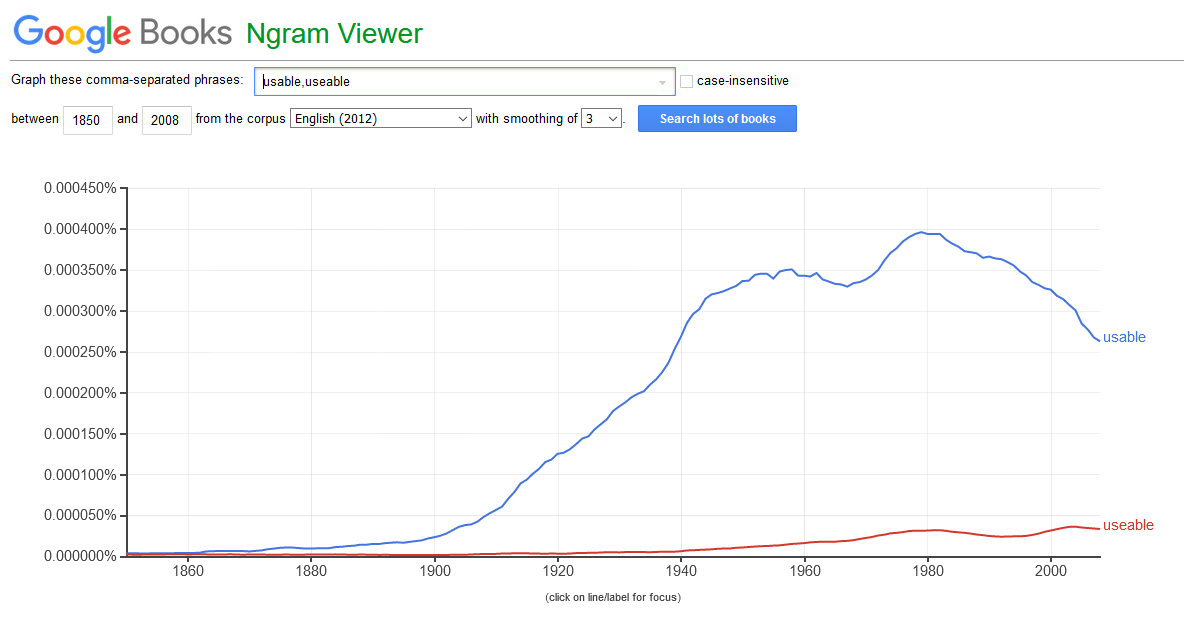
How to Use Google Ngram Viewer While Proofreading
Google offers many tools that a proofreader might use. One of the most underappreciated is the Google Books Ngram Viewer, which you can use to see how common certain words are in a piece of content.
So, how does the Ngram Viewer work? And how can you use it while proofreading?
What Is an Ngram?
An n-gram, in basic terms, is a statistical analysis of how frequently something, such as a word or phrase, appears in writing or speech. It helps analyze language patterns and relationships between words. By examining n-grams, we can gain insights into common phrases, detect errors, and ensure consistency in writing.
What Is the Google Ngram Viewer?
The Google Ngram Viewer is a tool that allows you to generate n-grams and compare how often certain words appear. It works by analyzing a massive corpus of texts and calculating the frequency of n-grams over a specified time period. Users can input specific words or phrases, and the Ngram Viewer generates a graph displaying the frequency of those n-grams over time. The tool provides valuable insights into the historical usage and popularity of words and phrases, making it useful for linguistic research, language analysis, and cultural studies.
How does Google Ngram Viewer Work?
It does this by analyzing the Google Books database. So if you search for “usable” and “useable,” for instance, you can see that the former is much more common in the archived texts. It also shows you how the use of these spellings has changed over the years.

Google’s Ngram Viewer (Usable vs. Useable)
As such, by creating an n-gram you can:
- See which spelling is considered standard between two variants.
- Check whether a variant spelling is still used in modern English.
- Compare the use of words and spellings in American and British English.
- Check whether a term is typically capitalized (e.g., Brownian motion vs. brownian motion).
In other words, the Ngram Viewer is a handy reference tool for editors and proofreaders.
How to Use Google Ngrams Viewer in Google Books
To generate an n-gram in the Google Ngram viewer:
- Go to the Ngram Viewer webpage.
- Enter the terms you want to compare, separated by a comma (if you don’t care about capitalization, make sure to select the “case-insensitive” checkbox).
- If required, select the dates you want to check between (the default is 1800 to 2008) and the corpus you want to check (e.g., English, American English, British English).
- Hit “search lots of books” to produce a graph featuring your selected terms.
You can also adjust the “smoothing” option before searching, but this only affects the presentation of the graph, and the default setting is fine for most searches.
Is Google’s Ngram Viewer Accurate?
Before we leave you, we should raise a note of caution: Google’s Ngram Viewer is a useful tool, but it isn’t perfect! It only looks at published books, with an emphasis on scientific literature, so its results won’t perfectly reflect how people use words in the real world.
Also, clients may choose to use a non-standard spelling sometimes. And unless that causes any problems with clarity in a document, the variant spelling may be fine as it is.
Most of the time, if you feel that an author is using an unusual spelling, it is better to leave a comment noting the potential problem. You can even use a link to the relevant n-gram to show your client why they may want to use the standard spelling. But Ngram Viewer is not definitive! So remember to use your judgement when checking spellings.
Are Ngrams good for Proofeaders and Editors?
By examining n-grams, which are consecutive sequences of words, proofreaders and editors can better understand the surrounding words and phrases, helping them identify grammatical errors, inconsistencies, and missing words. N-grams also help spot typos and spelling errors by comparing observed n-grams with known n-grams from dictionaries or language corpora. Additionally, n-grams assist in maintaining consistency throughout a document, identifying recurring phrases, and ensuring accurate language usage.
Becoming A Proofreader
Want to learn more about proofreading? Sign up for a free trial of our Becoming a Proofreader course.








Join the Conversation
Leave a Comment
Your email address will not be published.